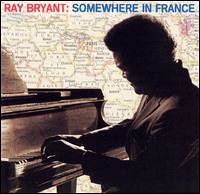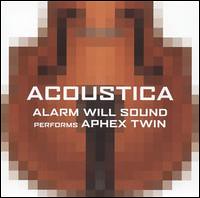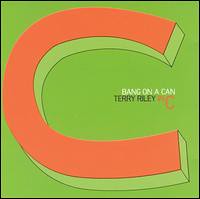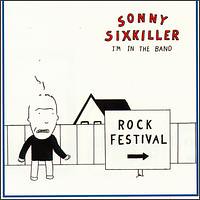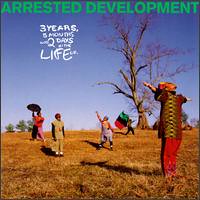Putting a Face to the Name
Artist: Azusa Plane
Albums: Tycho Magnetic Anomaly and the Full Consciousness of Hidden Harmony; America is Dreaming of Universal String Theory
Source: Promos
In the documentary Looking for a Thrill, musicians talk about the people and things that inspire them. James McNew (from Yo La Tengo), an excellent musician who is also a portly fellow, talks about going to see the Minutemen as a teen. Up until then, he’d always thought of rock musicians as looking (or maybe just being) a certain way. Up on a pedestal, clothed and coiffed just right, those about to rock earned their salutations by being bigger than life and rocking in a way that fit inside a certain set of defined expectations.
And then there was D. Boon. Short, fat, bad hair, wearing an old flannel shirt, and just rocking the place to death. He wasn’t what McNew expected from his rockers, and it showed him that he didn’t have to be thin or handsome or well-dressed or, really, anything in particular. Like the Minutemen said, “our band could be your life, real names will be proof.” They were real and regular guys, and knowing who they were didn’t matter if you knew what they did.
The first thing I knew about the Azusa Plane was what they did. Well, not “they” really – the band is essentially one guy, Jason DiEmilio. He lived out in the Philly ‘burbs, and in 1997 my editor at a local paper passed me a copy of Tycho Magnetic Anomaly and the Full Consciousness of Hidden Harmony, his debut CD, and 7” with an assignment for a review.
I listened. It sounded familiar, but not really like anything I’d heard before. It said “All sounds on this CD originated from a Fender guitar” on the disc’s packaging, and it was both entirely obvious that this was true and sort of unbelievable. This was not a “band” playing “songs” in any way that anyone would recognize: each long track (ranging between about 9 to 25 minutes apiece) meandered and flowed and built and collapsed in ways that suggested the motion and emotion of rock music without actually sticking to its form. Each moment was mysterious and cool and enticing; telling you that it was all done on a Fender got you no closer to figuring out how it was done. The guitar was just a machine that DiEmilio used to sculpt these soundscapes of music that was not quite rock, not quite psychedelic, not quite noise, but had hooks into all of the above and more.
I quickly became a fan. The Azusa Plane played live rarely (I only saw them once, years later, and DiEmilio put together a more standard “rock band” that made an entirely different kind of noise), but he did keep the mystery going with limited-edition singles and weird little releases here and there.
When I started writing about local music for AOL’s Philadelphia office, I decided to dig a little deeper into the Plane. Another full-length was out in 1998, America is Dreaming of Universal String Theory, this one a double disc on his own label, Colorful Clouds for Acoustics (if there’s one thing DiEmilio is most certainly not about, it’s concise titles). I wanted not to just do a review of the album, the thing he did, but a feature about who DiEmilio was. He was friendly and cooperative, and I put it together.
At an editorial meeting, I talked about the piece, and my coworker Todd started laughing. “Jason DiEmilio?” he asked, “I know him! He’s a skinny little kid who was a camera operator at the TV station I used to work at.” Todd went on to describe DiEmilio in all-too-human terms. This mysterious mystical musician in my mind was, in Todd’s description, a quiet, shy, skinny, somewhat geeky guy who did his work and then shut himself in his room back home to make his little recordings. Everything Todd (no fan of noisy/abstract music in the slightest) said lined up with the guy I’d talked to; but his point of view, the face Todd put to the name, was an entirely deflated version of Mr. Azusa Plane. I heard a seer pouring himself through a sleek Fender; Todd saw a music nerd who didn’t go out for beers and talk about sports after work.
It didn’t affect how I listened to the Azusa Plane records – I still find them subtly powerful, somehow always sounding different each time I listen – but it did change how I thought about DiEmilio, at least a little. He was just a regular guy like me (skinny, somewhat geeky; though I was never quiet nor shy), who did some stuff he liked and hoped other people liked it, too. He wasn’t sending his two stone tablets of guitar noise down from great heights, but from an apartment that was probably no different from anyone else’s in and around the city at the time. People who heard his music outside of the Philadelphia area, especially his overseas fans (the Plane had a following in Australia, home to Tycho’s record label, Camera Obscura) heard the music and just had that to judge it on, a somewhat different experience from having a face to put to the music, one that didn’t necessarily look like what they were hearing.
SISOSIG? Hey, I’m finally finished with the A’s! Sure, I’m not quite finished with the first of a couple dozen shelves…but it’s something. Anyway, these are both keepers. To the best of my knowledge, this represents the entirety of the Azusa Plane’s LP catalogue (he did a lot more with singles and EPs) and they’re quite unlike anything else in The Beast. I don’t like String Theory quite as much as Tycho, but as I said, these records always sound a little different each time, interacting with the mood, volume, speakers and whatever else factors in to such thrillingly unusual music.
Albums: Tycho Magnetic Anomaly and the Full Consciousness of Hidden Harmony; America is Dreaming of Universal String Theory
Source: Promos
In the documentary Looking for a Thrill, musicians talk about the people and things that inspire them. James McNew (from Yo La Tengo), an excellent musician who is also a portly fellow, talks about going to see the Minutemen as a teen. Up until then, he’d always thought of rock musicians as looking (or maybe just being) a certain way. Up on a pedestal, clothed and coiffed just right, those about to rock earned their salutations by being bigger than life and rocking in a way that fit inside a certain set of defined expectations.
And then there was D. Boon. Short, fat, bad hair, wearing an old flannel shirt, and just rocking the place to death. He wasn’t what McNew expected from his rockers, and it showed him that he didn’t have to be thin or handsome or well-dressed or, really, anything in particular. Like the Minutemen said, “our band could be your life, real names will be proof.” They were real and regular guys, and knowing who they were didn’t matter if you knew what they did.
The first thing I knew about the Azusa Plane was what they did. Well, not “they” really – the band is essentially one guy, Jason DiEmilio. He lived out in the Philly ‘burbs, and in 1997 my editor at a local paper passed me a copy of Tycho Magnetic Anomaly and the Full Consciousness of Hidden Harmony, his debut CD, and 7” with an assignment for a review.
I listened. It sounded familiar, but not really like anything I’d heard before. It said “All sounds on this CD originated from a Fender guitar” on the disc’s packaging, and it was both entirely obvious that this was true and sort of unbelievable. This was not a “band” playing “songs” in any way that anyone would recognize: each long track (ranging between about 9 to 25 minutes apiece) meandered and flowed and built and collapsed in ways that suggested the motion and emotion of rock music without actually sticking to its form. Each moment was mysterious and cool and enticing; telling you that it was all done on a Fender got you no closer to figuring out how it was done. The guitar was just a machine that DiEmilio used to sculpt these soundscapes of music that was not quite rock, not quite psychedelic, not quite noise, but had hooks into all of the above and more.
I quickly became a fan. The Azusa Plane played live rarely (I only saw them once, years later, and DiEmilio put together a more standard “rock band” that made an entirely different kind of noise), but he did keep the mystery going with limited-edition singles and weird little releases here and there.
When I started writing about local music for AOL’s Philadelphia office, I decided to dig a little deeper into the Plane. Another full-length was out in 1998, America is Dreaming of Universal String Theory, this one a double disc on his own label, Colorful Clouds for Acoustics (if there’s one thing DiEmilio is most certainly not about, it’s concise titles). I wanted not to just do a review of the album, the thing he did, but a feature about who DiEmilio was. He was friendly and cooperative, and I put it together.
At an editorial meeting, I talked about the piece, and my coworker Todd started laughing. “Jason DiEmilio?” he asked, “I know him! He’s a skinny little kid who was a camera operator at the TV station I used to work at.” Todd went on to describe DiEmilio in all-too-human terms. This mysterious mystical musician in my mind was, in Todd’s description, a quiet, shy, skinny, somewhat geeky guy who did his work and then shut himself in his room back home to make his little recordings. Everything Todd (no fan of noisy/abstract music in the slightest) said lined up with the guy I’d talked to; but his point of view, the face Todd put to the name, was an entirely deflated version of Mr. Azusa Plane. I heard a seer pouring himself through a sleek Fender; Todd saw a music nerd who didn’t go out for beers and talk about sports after work.
It didn’t affect how I listened to the Azusa Plane records – I still find them subtly powerful, somehow always sounding different each time I listen – but it did change how I thought about DiEmilio, at least a little. He was just a regular guy like me (skinny, somewhat geeky; though I was never quiet nor shy), who did some stuff he liked and hoped other people liked it, too. He wasn’t sending his two stone tablets of guitar noise down from great heights, but from an apartment that was probably no different from anyone else’s in and around the city at the time. People who heard his music outside of the Philadelphia area, especially his overseas fans (the Plane had a following in Australia, home to Tycho’s record label, Camera Obscura) heard the music and just had that to judge it on, a somewhat different experience from having a face to put to the music, one that didn’t necessarily look like what they were hearing.
SISOSIG? Hey, I’m finally finished with the A’s! Sure, I’m not quite finished with the first of a couple dozen shelves…but it’s something. Anyway, these are both keepers. To the best of my knowledge, this represents the entirety of the Azusa Plane’s LP catalogue (he did a lot more with singles and EPs) and they’re quite unlike anything else in The Beast. I don’t like String Theory quite as much as Tycho, but as I said, these records always sound a little different each time, interacting with the mood, volume, speakers and whatever else factors in to such thrillingly unusual music.

